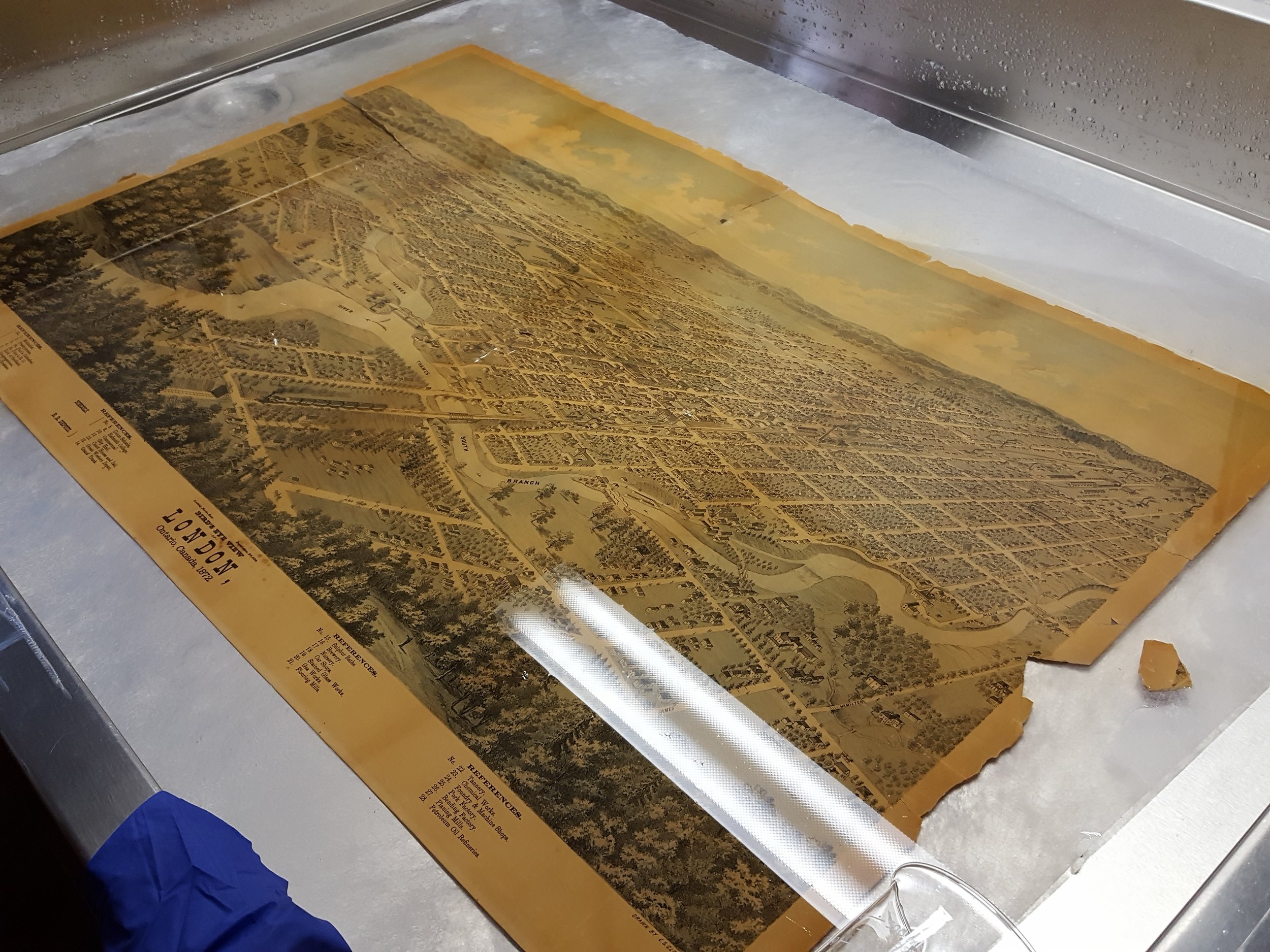Set of 7 watercolour architectural drawings, tightly rolled before conservation treatment.
Architectural drawings are not only archival documents, but can also be beautiful artworks in their own right.
Book and Paper Conservation Services recently treated a set of seven watercolour architectural drawings depicting details of the Cathedral Basilica of Christ the King in Hamilton, Ontario. The treatment involved humidifying the tightly rolled drawings, surface cleaning to remove dirt and grime, removal of tape and adhesive residue from the back of the works, and finally framing in acid-free materials to preserve and safely display these gorgeous watercolours.
The watercolours were exquisite works of art, and we were thrilled to be part of the project! Read more about the process and see the results on the Diocese of Hamilton website.
Conservation Treatment: Watercolours from the Cathedral Collection
If you have architectural drawings or other archival materials you or your organization are interested in having restored, contact us to discuss conservation options. And check out our treatment portfolio to see other treatment projects we've undertaken on documents and records!





















